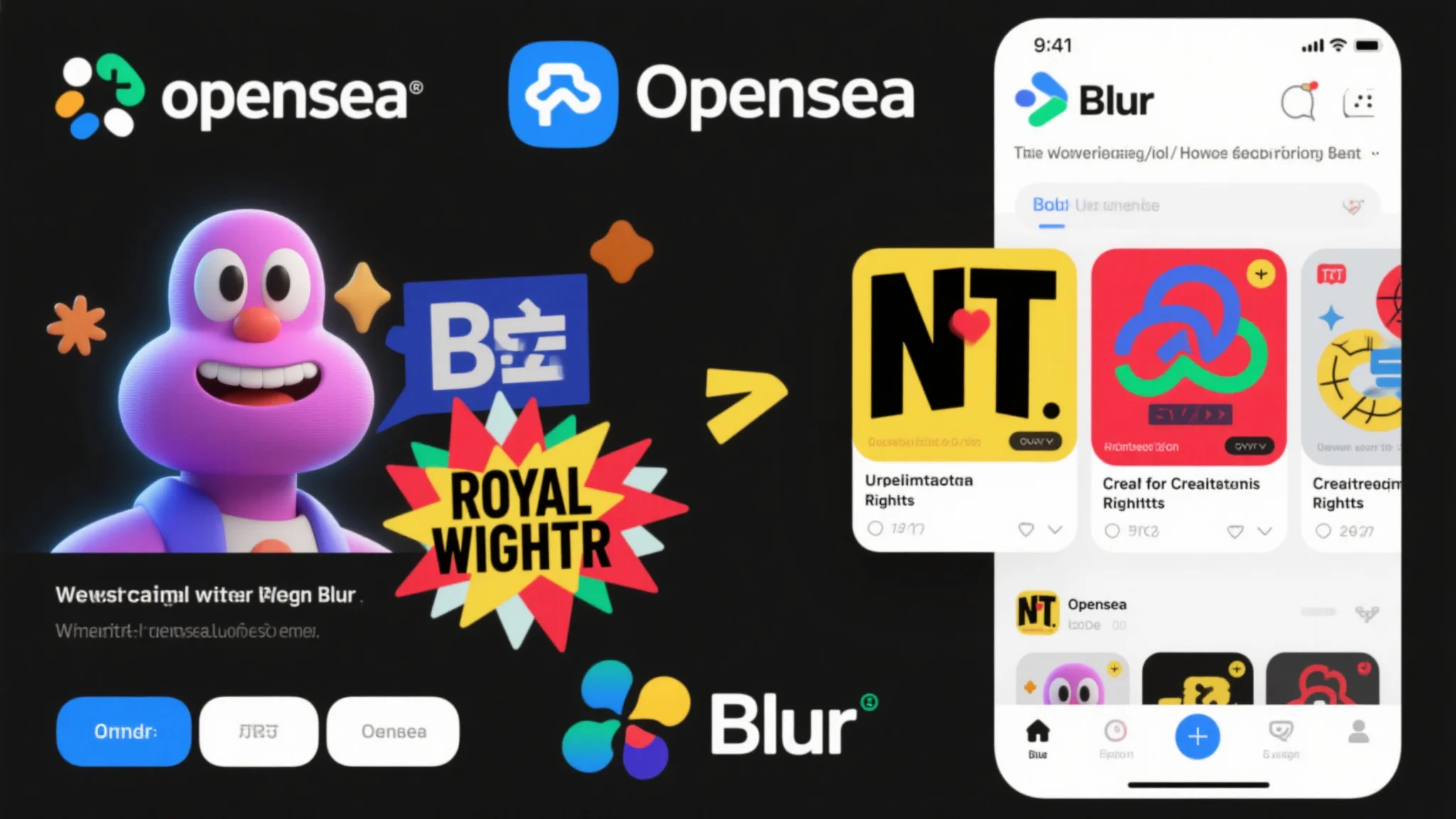Royalty Wars in NFT Marketplaces: How OpenSea and Blur Are Fighting for Creator Rights
The Battle Over Secondary Market Royalties
The ongoing conflict between major platforms regarding NFT royalty management has fundamentally reshaped the digital art economy. OpenSea’s enforcement of creator-set royalties stands in stark contrast to Blur’s optional approach, creating divergent incentives across the ecosystem. This philosophical divide impacts everything from artist revenue streams to collector behavior patterns. The most successful creators now strategically distribute their work across multiple platforms, balancing Blur’s liquidity advantages against OpenSea’s royalty guarantees. Emerging technical solutions like on-chain enforcement mechanisms attempt to bridge this divide, but implementation challenges remain significant. The royalty debate has also sparked important conversations about the long-term sustainability of creator monetization models in web3, with some artists experimenting with alternative compensation structures like dynamic royalties that adjust based on secondary market performance.
Legal dimensions add complexity to the royalty landscape, particularly regarding blockchain copyright protection enforcement. While smart contracts technically enable automatic royalty payments, jurisdictional differences in digital asset law create enforcement gaps. Some platforms now offer hybrid solutions that combine on-chain royalty collection with traditional legal remedies for non-compliant marketplaces. The most sophisticated implementations include automated DMCA takedown systems that identify unauthorized royalty-free listings across platforms. These systems leverage blockchain analytics to trace NFT movements between marketplaces, flagging instances where royalty obligations are being circumvented. The legal infrastructure supporting these enforcement mechanisms continues to evolve, with specialized crypto legal services firms emerging to handle the unique challenges of cross-border digital asset disputes.
Market dynamics reveal surprising patterns in how royalty policies affect platform competition. While Blur’s optional approach initially attracted significant trading volume, OpenSea’s creator-friendly stance has proven resilient among high-value collectors. The platforms’ differing fee structures create arbitrage opportunities that sophisticated traders exploit, sometimes at the expense of creator earnings. Some analysts predict the emergence of royalty-based market segmentation, where different platforms cater to distinct segments of the creator-collector spectrum. The most innovative marketplaces are experimenting with royalty-sharing models that distribute a portion of platform fees back to creators, creating additional revenue streams beyond traditional secondary sales percentages.
Technological Solutions for Royalty Enforcement
Innovations in NFT royalty management technology aim to resolve the current platform fragmentation. The most promising approaches involve protocol-level solutions that embed royalty requirements directly in token standards. These next-generation NFTs include built-in enforcement mechanisms that persist across marketplaces, effectively making royalty payments non-negotiable. Some implementations use decentralized identifier systems to link NFTs with creator wallets, ensuring payments route correctly even if the original marketplace disappears. These technical solutions face adoption challenges, however, as they often require creators to migrate existing collections to new standards – a process that can be costly and technically complex for less sophisticated artists.

Decentralized governance models offer another approach to standardizing creator monetization practices. Several DAO-led initiatives have proposed royalty frameworks that participating platforms can voluntarily adopt. These systems typically include reputation mechanisms that reward compliant marketplaces with visibility boosts or other benefits. The most advanced implementations incorporate decentralized dispute resolution for royalty-related conflicts, using token-weighted voting to adjudicate edge cases. These community-driven solutions aim to create market pressure for royalty compliance without requiring centralized enforcement, though their effectiveness depends heavily on widespread participation from both platforms and users.
Hybrid legal-technical solutions are emerging as powerful tools for blockchain copyright protection in the royalty context. Some platforms now offer optional legal wrappers around NFT transactions that convert smart contract royalty obligations into enforceable contractual terms. These systems leverage oracles to verify royalty payments and automatically trigger legal processes when violations occur. The most comprehensive implementations integrate with traditional crypto legal services networks, providing creators with access to specialized attorneys who understand both blockchain technology and intellectual property law. These solutions remain relatively expensive and complex compared to purely technical approaches, but they offer stronger guarantees for high-value digital assets.
The Future of Creator Compensation Models
The royalty debate is driving innovation in alternative creator monetization approaches that complement or replace traditional percentage-based models. Some platforms now offer subscription-based creator support systems where collectors pay recurring fees for exclusive access or perks. Others experiment with micro-patronage models that allow fans to directly fund artists through small, frequent contributions. The most radical approaches eliminate secondary sales entirely, treating NFTs as non-transferable access tokens to digital content. These experiments reflect a broader rethinking of how value should flow in digital creative economies, with implications far beyond the current NFT royalty management debates.
Legal frameworks continue to evolve alongside these technical innovations, particularly in the realm of blockchain copyright protection. Several jurisdictions are considering legislation that would recognize smart contract royalty terms as legally binding, regardless of marketplace policies. These legal developments could significantly impact platform competition, potentially forcing royalty-optional marketplaces to either comply or face regulatory consequences. Simultaneously, international standards bodies are working to harmonize cross-border approaches to digital asset royalties, though progress remains slow due to conflicting national interests. The eventual shape of these legal frameworks will play a decisive role in determining whether web3 fulfills its promise of fairer compensation for digital creators.
The long-term solution may lie in hybrid approaches that combine the best elements of current crypto legal services and technological solutions. Imagine a system where smart contracts automatically adjust royalty rates based on real-time market data, legal wrappers provide fallback enforcement mechanisms, and decentralized governance oversees dispute resolution. Such a system could balance flexibility with reliability, accommodating diverse creator needs while maintaining consistent standards across platforms. While technical and regulatory hurdles remain, the intense competition between current market leaders suggests that whichever platform first cracks this complex puzzle could gain significant strategic advantage in the battle for creator and collector loyalty.
